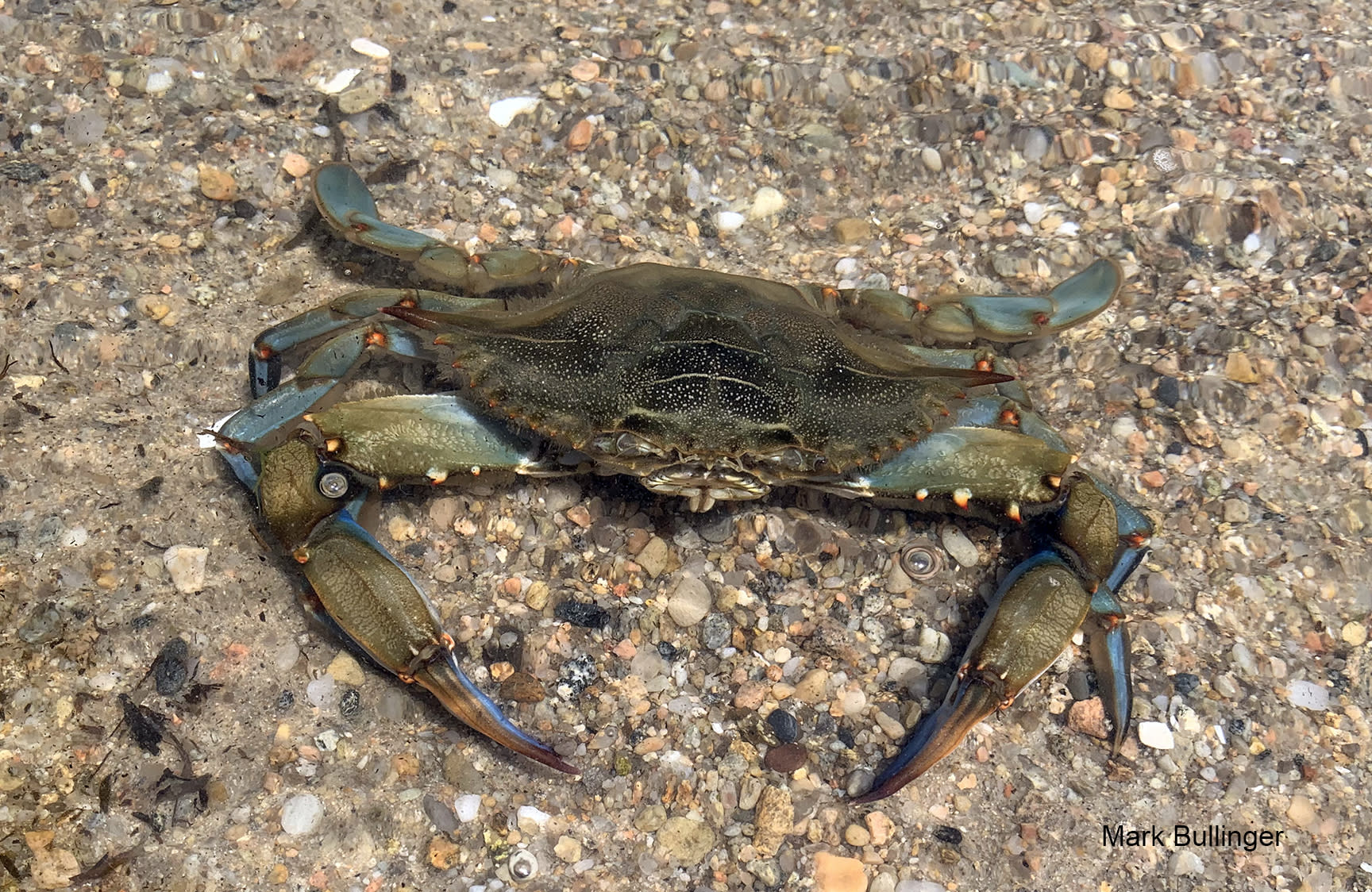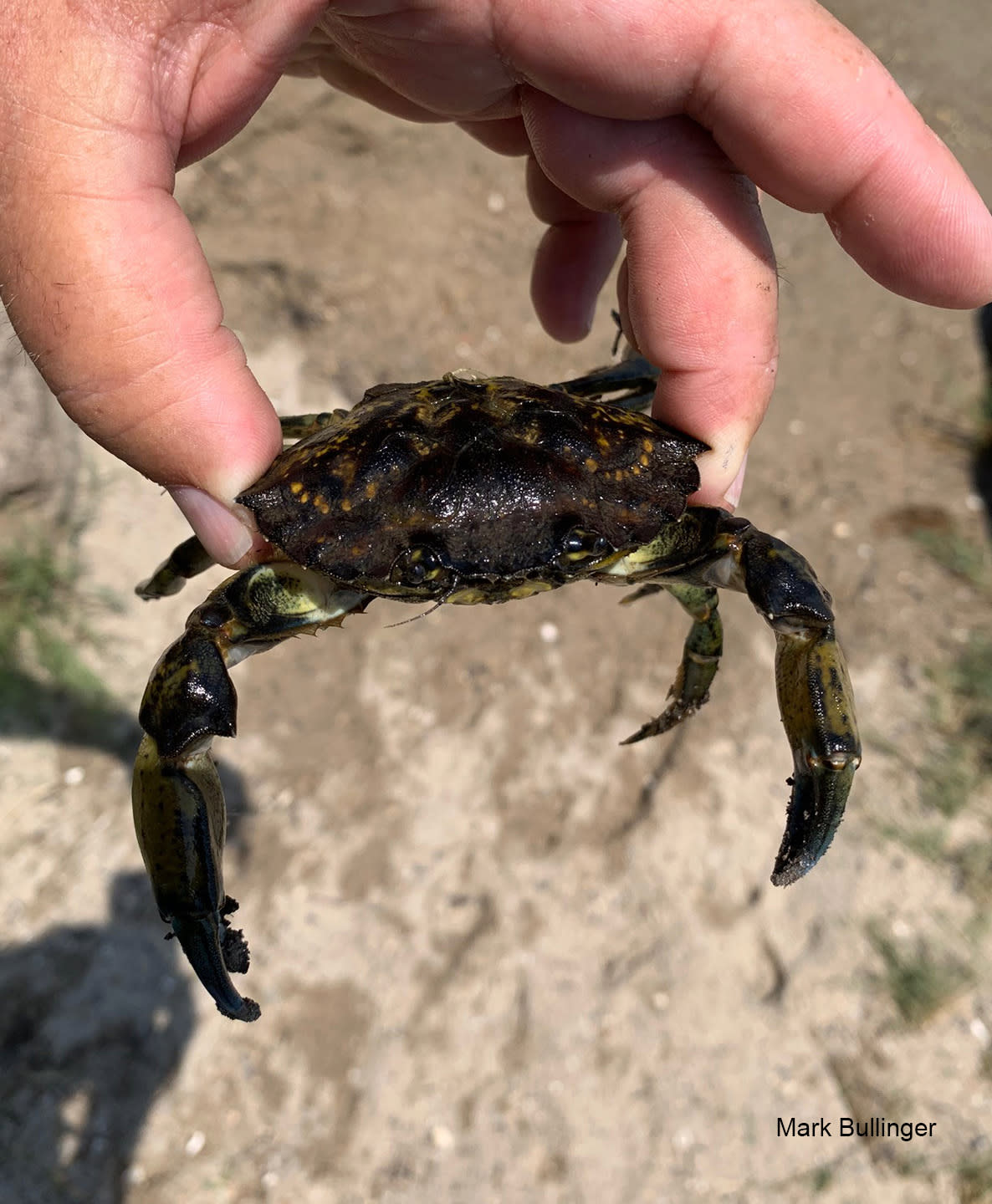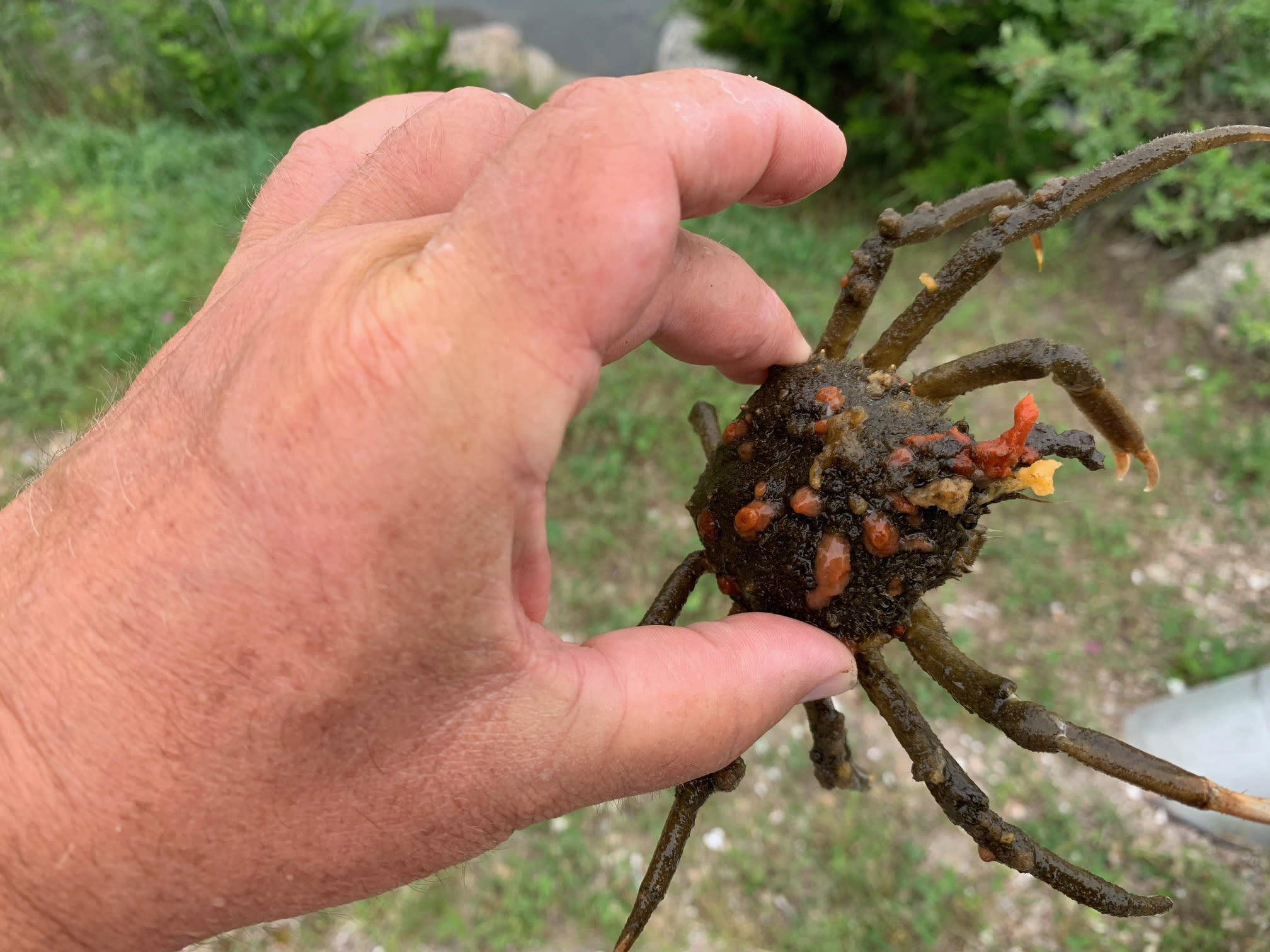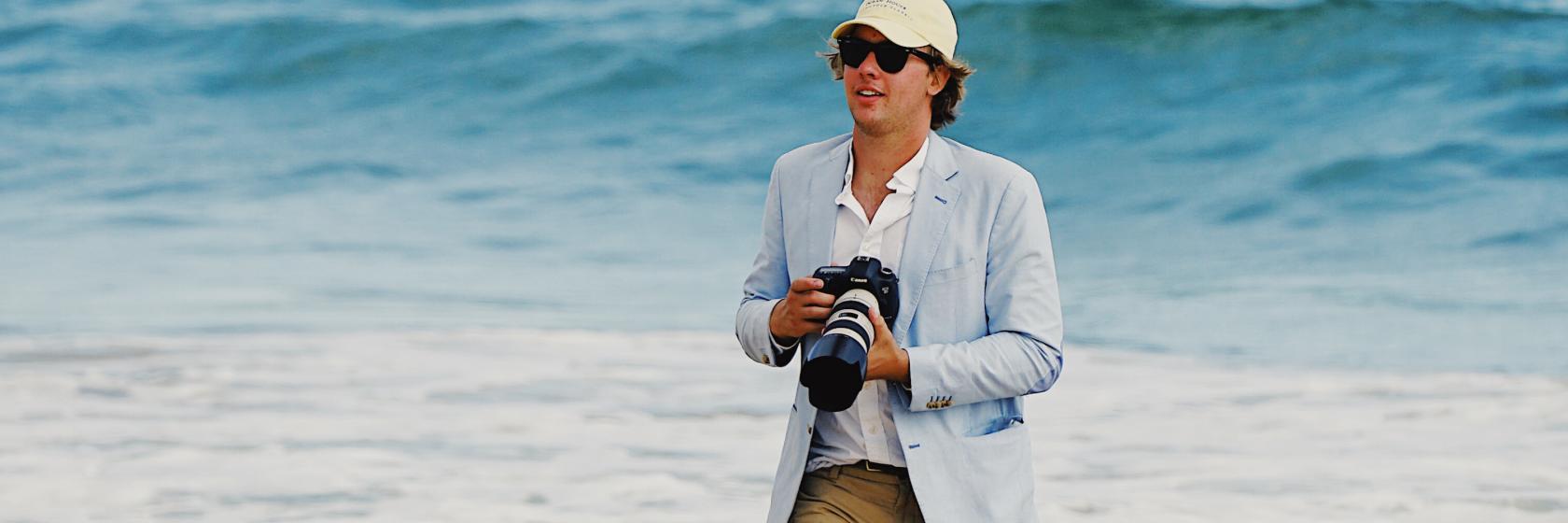
It’s summer in South County and for quite a few people few things are better than exploring salty waters looking for crabs. Visit any of our stone breachways or small bridges across tidal waters and you’re likely to see clusters of people intent in the goal of filling a bucket with crabs.
Some crabs are destined for the dinner table, some will be bait, and many will be thrown back afterwards to live (and perhaps be caught) another day. It is easy to get started in crabbing; all you need is a bucket, a crab net, and access to the water’s edge. A crab line and a bit of bait will lure crabs within reach and improve your results. All supplies are available at local bait and tackle shops, although my favorite crab bait is a raw chicken drumstick. The bone and knuckle at the end prevents the bait from slipping free of the line and the oily skin puts out a slick that crabs can smell from far off. Plus, drumsticks don’t stink half as bad as frozen squid, unless, of course, you forget to dispose of them and leave them in the bucket for a few days!
South County Rhode Island is home to a variety of crabs and all of them are fun to catch and inspect. That said, not all crabs are created equal. For most people, the big kahuna of east coast crabs – and the one most likely to inflict pain – is the blue crab.

Blue Crab
What a marvel of natural engineering! Exquisite in the way it is equipped for action - climbing, swimming, fighting and feeding – and sublime in the elegance of its design. Look at the details of a big Jimmy (name for a large male): lethal claws retracted tight against his shell; swimmer feet at the ready to produce a burst of brilliant speed; the cerulean contours of its sculpted exoskeleton; the steady stream of water flowing over the gills and exiting the mouth area like an engine at idle. A big blue crab is so finely developed, so machine-like in appearance that upon close inspection it’s easy to imagine it as the product of an advanced robotics lab. But if you have a blue crab in a bucket, don’t get too close when inspecting it! They are aggressive when captured and can thrust formidable snapping pinchers several inches out of the water with impressive speed. And not only are the pinchers strong, they curve to a sharp point at the tip. A big blue once tagged me when I tried to pick it up and punched right through my thumbnail! (Note: puncture wounds like that are dangerous and a doctor with me at the time sent me home right away to soak the wound in hydrogen peroxide for a half hour)

Fast shutter speed captured this guy as he was lunging toward the camera. When agitated they can lunge 3 – 4” out of the water while snapping their claws. Photo: Mark Bullinger.
Blue crabs are swimming crabs and although they spend most of the time on the bottom they are able to move very quickly by running and sculling their swimming legs. They can even swim up in the water column and some say actively hunt small fish. I’ve never witnessed that myself, but I can attest that they attack just about anything else that’s in a bucket with them. The shape of the abdomen most easily identifies the gender of blue crabs. On males it is long and thin (like the Washington monument) and on females it is rounded (like the Capital dome). Rhode Island regulations limit harvesting of blue crabs to residents only, so if you are visiting from out of state, be prepared to put them back. For residents hoping to catch keepers for dinner, blue crabs must be 5” from one tip of the shell to the other. Egg-bearing females and under-sized crabs must be returned immediately.
Younger blue crabs are not blue and the easiest way to identify all blue crabs is to look for the long point on either side of its shell and the paddle like appearance of its rear legs. Big blue crabs are most abundant in the upper reaches of our estuaries, and docks or small bridges in these areas are good places to look for them. Sometimes you catch them in baited crab traps, but the chicken leg and net approach is more exciting. For all their toughness, blue crabs are sensitive to conditions in a pail. low oxygen, warming water and even just the stress of being in a bucket can do them in. If a crab is not going to be kept, please release it before long into the waters where you caught it.
Lady Crab
Lady crabs look and act somewhat like blue crabs. They are the other swimming crab in Rhode Island waters and have paddle-like rear legs just like the blue. They also have powerful pincer claws and an aggressive demeanor. The difference in appearance between a lady crab (which is just the name – there are male and female lady crabs) is that the shell is speckled and it doesn’t have the long points on either side of the shell. Lady crabs are not as tasty as blue crabs and are generally not sought as food. I don’t think they get as big, either. Nevertheless, lady crabs look great in a bucket and add a lot of excitement to a live-tank collection.

Green Crab
Green crabs are probably the most commonly caught crab these days. A non-native invasive, they came from Europe in the bilge water of ships. Green crabs are very abundant: set a crab trap with stinky bait and you will catch a mess of them in short order. I remember once setting a trap baited with a fish carcass in one of our local breachways. It was dusk, and within minutes I was aware of a shadow moving across the sandy bottom under the dock. After maybe twenty minutes I lifted the trap and poured the contents onto the deck of the boat - there were close to 100 crabs in the trap! Green crabs are often used for bait and are the preferred bait for tautog (aka blackfish), which think they are simply delicious. I’ve heard of people eating green crabs and while there isn’t much meat in their claws I understand they make a flavorful stock. Green crabs will pinch, but are much easier to handle than blue crabs. You can find green crabs in all of our marine water: up in the estuaries, right in the breachways connecting to the ocean, in the salt ponds, and along the rocky ocean shoreline.

Spider Crab
Spider crabs are slow-moving and easy to catch with a net. Like all crabs they have pincers, but unless it is a really big crab they don’t hurt very much. Even with a crab of unusual size the claws are pretty easy to avoid, given the slowness of the creature. Spider crabs are a favorite prey of hungry gulls and you will often find the hollowed out husks of spider crabs in parking lots near estuaries where the crabs live. Spider crabs are actually gardeners and they will transplant little pieces of seaweed to the back of their carapace using their long fore claws and a viscous mucus to help the weed stick and take root. With a bit of greenery on their backs, a crab can settle into the sand and look a lot like a small rock. I wouldn’t want to eat a spider crab, but they are fun to catch and are one of the safest crabs for kids to handle.

Asian Shore Crab
These invasive crabs also arrived from overseas in the bilge water of ships somewhere back in the 80’s. They are completely established here and easy to catch. They are a small crab – just the size of a dime or so – and easy to handle. They might occasionally deliver a small pinch, but they are too small to do any damage and most people just hold them in their hand. Look for these little crabs around and under rocks along the rocky sections of ocean beaches and tidal waters. They are easy to recognize by the stripes on their legs.
Rock Crab
Rock crabs are kind of the classic generic crab - reddish in color, fairly large, and slow moving compared to some of the other species. They tend to be found in deeper waters, so look along the breachways for thee guys and you will have better luck than up in the backwaters. That said, I remember looking off a back-water dock one spring day and seeing dozens of them. I suspect they had just emerged from a winter’s hibernation in the muddy bottom. Many people eat rock crabs.
Jonah Crab
Next to the blue crab, Jonah crabs are our top eating crab and there is a commercial fishery for them in Rhode Island. However, they generally inhabit deeper waters and are not all that common along the shoreline. Again, looking in the breachways might produce better results, but if you plan on finding a mess of them for dinner you might want to have a back-up plan.

These guys are full of personality. Most hermit crabs live in periwinkle shells, but I recently found a jumbo one living in a moon snail shell. Hermit crabs do not grow their own shells, but move into empty shells they find. As they grow, they vacate one shell and move into a roomier model. Photo: Mark Bullinger.
Crabbing is a great way to while away summer hours along the shore. It is easy, inexpensive and can engage kids for an amazingly long time. It is also a great inter-generational activity. Even as kids get older and handle the lines and nets themselves, there is a role for adults, who can scan the waters from a higher vantage point and point out targets. Crabbing gets kids outside and away from electronics and holds their attention longer than many activities. Additionally, while everyone is looking in the water, they will see other cool things ranging from fish and water birds, to waving seaweeds. Crabbing can be done on a drizzly gray day just as well as a sunny one, morning or afternoon, and on incoming or outgoing tides. Come visit the South County shoreline and take yourself and/or the kids crabbing along our magnificent beaches and inlets – you will have fun and leave with great memories! Visit SouthCountyRI.com for trip ideas and itineraries.

The fiddler crab is small in stature, but the males have a big claw. With fiddler crabs size seems to matter - the larger the claw, the more attractive a guy is to females. Fiddler crabs got their name because the big claw resembles a fiddle player’s bow.

Mark Bullinger has been on and around the waters of South County Rhode Island all of his life. He is an enthusiastic fisherman, birder and general nature buff. Capt. Mark, as he is often called, has led over two-thousand guided outings in southern Rhode Island via motorboats, kayaks, vans and on foot. Mark was the Executive Director of Salt Ponds Coalition for five years and has been the resident naturalist at the Weekapaug Inn since 2012.








